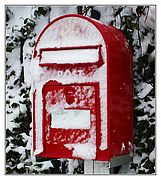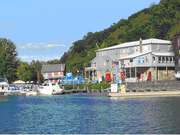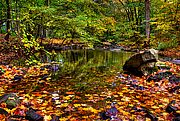Throughout the country municipalities and states have struggled over what to do with old or unneeded pharmaceuticals. Too often, they are simply flushed down the toilet, but sewage treatment plants aren’t necessarily equipped to remove them. As a result, the drugs end up in the water where they are still active. Additionally, unused medications often end up on the street, being sold illicitly... Read...
News from Selected Category
If you’re a skilled carpenter with time on your hands we could use your help! LCC is looking for several volunteers to tackle an interior job building walls and work counters for our office space. The project work will likely take place late winter through early spring. Interested individuals should contact LCC Executive Director Lori Fisher at lorif@lakechamplaincommittee.org or 802 658-1414. Read...
Winter often offers a frozen lake for skating, fishing, and myriad other activities. Throughout the winter you can watch for changes in the ice as it continues to grow, shrink, and move. Three phenomena that demonstrate the dynamic nature of ice are tension cracks, pressure ridges, and ice ramparts... Read...
Let us know if there is anyone whom you think would enjoy getting our Ripples E-News bulletins and please, forward it on to colleagues, friends, and relatives that share your love of the lake. We welcome your comments and suggestions for topics to include in future issues. Click here to send us your feedback. Thanks! Read...
If you’ve had an address change recently, please send us an email so we can update your files and ensure you receive news on lake issues and LCC’s work. Our primary form of communication with members is through email. By mailing electronically we save time and resources and reinforce the stewardship ethic of our mission. We don’t give away or sell email addresses. To ensure that our email messages get through to your inbox, please add lcc@lakechamplaincommittee.org and the domain enews.lakechamplaincommittee.org to your safe/allowed list and address book. Thanks! Read...
The Rensselaer Polytechnic Institute Darrin Fresh Water Institute (DFWI) is leading a pilot project to assess the effectiveness of benthic barrier mats in controlling Asian clam (Corbicula fluminea), the newest aquatic invasive species in Lake George, NY. The pilot project is advised by the Asian Clam Rapid Response Task Force. Partners include technical experts from Lake Tahoe where spread prevention techniques for Asian clam are already underway. Read...
The Burlington Free Press reported that researchers from the University of Vermont (UVM) are conducting the first survey since the 1930s of lake whitefish populations in Lake Champlain, and the results have been promising. Whitefish are relatives of trout and salmon. Lake Champlain is near the southern edge of their habitat range. Up until the early 1900’s there was a strong commercial fishery for the species. However, declines in the quantity of fish taken led to closing the commercial market. When the UVM researchers surveyed historic spawning grounds in Missisquoi Bay and at Larrabees Point in Shoreham, they found no whitefish. Instead the fish seem to be spawning all throughout the Main Lake. Read...
Results from the Lake Champlain Committee's volunteer water monitoring program provide insight into the levels and locations of nutrient pollution. In 2010, significant algae blooms developed early during a July heat wave. Evidence of the bloom was reported from Burlington south to Port Henry, areas not usually associated with bloom conditions. These blooms cleared by mid-July. St. Albans Bay developed a bloom that persisted through much of July and into August. Blooms in Missisquoi Bay were less severe than in recent years and for the first time since 2007 no ‘high alerts’ (worrisome levels of actual toxins measured) were issued. Read...
The New York State Public Service Commission (PSC) conducted a series of public hearings about the proposal to place a cable underneath Lake Champlain to transport electricity to New York City. LCC testified about concerns regarding impacts to the lake and the overall need for the project. The PSC plans to hold evidentiary hearings in early 2011. LCC has applied for active party status in the case. The power line proposers must begin construction by fall of 2011 in order to qualify for federal loans. Read...
It was November of 2009 when the Champlain Bridge was suddenly closed for good due to structural weaknesses in the bridge supports. One year later the bridge is gone; destroyed in a controlled explosion last December. Debris from the original bridge has been removed from the lake, and construction has begun on a new bridge with an anticipated completion date of September 2011. According to the New York State DOT website, since early November, the construction activities at the site have focused on installing the bridge substructures, with work at all 7 piers and both abutments well underway. Fabrication of the steel bridge members is also progressing at a steel fabrication plant in Pennsylvania. The new bridge is being built by Flatiron Construction, a transportation construction and civil engineering firm based in Colorado. In the meantime, a ferry runs 24 hours per day transporting vehicles over the narrow stretch of Lake Champlain the bridge once traversed. Read...
LCC received a $1,500 gift from our friends at the Regatta for Lake Champlain. Established in 2004, the Regatta is a fun annual sailing event that raises funds to support organizations working to promote the health, well-being and sustainable use of Lake Champlain. Over the years, donations from the Regatta have helped fund LCC’s blue green algae monitoring program, maintain the Lake Champlain Paddlers’ Trail, and expand our stewardship efforts. Read...
Autmn’s panoply of colors blankets the mountains of the Champlain Valley. All summer the trees have been investing in short-term high-yield leaves to collect sunlight, and then placing the dividends in long-term wood. Now, they’re dumping their investment before the inevitable downturn, knowing that winter’s snow and winds would be more likely to pull down good wood if they tried to hold onto their leaves. Many of those leaves will end-up in headwater streams of Lake Champlain where they represent the primary energy input for the river system. Read...
If you’ve had an address change recently, please send us an email so we can correct your files and ensure that we keep you updated on lake issues and LCC’s work. LCC’s primary form of communication with members is through email. By mailing electronically we save time and resources and reinforce the stewardship ethic of our mission. We don’t give away or sell email addresses. To ensure that our email messages get through to your inbox, please add lcc@lakechamplaincommittee.org and the domain enews.lakechamplaincommittee.org to your safe/allowed list and address book. Read...
What happens to all the leaves that fall into the Champlain Valley’s rivers during autumn as they make their way to Lake Champlain? Why does a thin line of clouds appear over the lake on crisp October days? Why do you sometimes notice a stale rotten smell around the lake in late autumn?... Read...
October is usually the month when Lake Champlain reaches its lowest levels. The average lake level for October is 95.03 feet. Water evaporates throughout the heat of the summer. When plants are growing they transpire water through their leaves leaving less to go into rivers and streams... Read...
The presence of pharmaceuticals and other “new generation” contaminants in surface waters of the United States has been well documented. In Lake Champlain, for example, researchers have found caffeine, HHCB (a musk fragrance), metolachlor (an herbicide). Effects are not well known... Read...
On October 31, 2009 winds buffeted the Champlain Valley stirring the leaves of Halloween. The winds were sustained over a twelve hour period. The next day, the Plattsburgh Press Republican reported wind damage from throughout Essex and Clinton Counties. The cause of the winds was a low-level jet that had developed over Lake Champlain... Read...
Landlocked Atlantic salmon head from Lake Champlain into tributaries to spawn during the fall. The main run of salmon usually extends from early September into mid-November... Read...
The underwater cap at the Burlington Barge Canal Superfund Site is being repaired to ensure that contaminants don’t migrate to Lake Champlain. The $3.5 million sand and silt cap, originally installed during 2003 and 2004, has been largely effective... Read...
The presence of a new exotic species, Asian clam, has been confirmed in Lake George, NY. Lake George drains directly to Lake Champlain via the LaChute River. The thumbnail-sized Asian clam, blamed for clouding Lake Tahoe in the High Sierras... Read...
New York State has passed a bill regulating the use of phosphorus by homeowners. As of January 1, 2012, homeowners and landscape contractors will not be able to apply fertilizer containing phosphorus to their lawns in the absence of a soil test that demonstrates a need for phosphorus or if a new lawn is being established. LCC recommends always getting a soil test...
Not sure what to do with leftover medicines collecting in your cabinet? The U.S. Department of Justice Drug Enforcement Administration is sponsoring a nationwide collection event for unused, unwanted or expired drugs. On Saturday September 25 from 10:00 to 2:00 there will be free, anonymous drop-offs at numerous locations throughout the basin on both sides of the lake. Drugs and pharmaceuticals that are disposed of improperly can pass through sewage treatment plants and end up in the lake unchanged. Don’t flush unused medicines down the toilet or put them in the trash, bring them to a “Take Back” event for safe disposal. To find a collection site near you, just type in a zip code or city at this web page link: www.deadiversion.usdoj.gov/takeback/. Check your medicine cabinets and spread the word. Read...
A friend recently commented on how different the water of Lake Champlain looked compared to the famous deep blue color of the Mediterranean Sea. The observation prompted me to remember the turquoise of the lakes in Glacier National Park in Montana... Read...
Come play in, on and around the lake with LCC on Saturday, August 28th from 10:00 AM until 2:00 PM at beautiful Oakledge Park in Burlington. We’ll have delicious food from local purveyors, lake news, a “State of the Lake” report, and plenty of opportunity for discussion and play in a great park. The gathering is free and open to the public but there is a small fee for parking. Click on the heading for further details and directions. Read...
Eurasian water milfoil (milfoil) is the bane of many a lake user. This aggressive non-native plant invades lake systems and spreads prolifically, choking out other plants and making swimming, boating, and fishing... Read...
What animal is more humble than a snail? They are the epitome of slowness. The dull-colored shells are easily overlooked within the lake and rarely studied, but snails are a source of food for 20% of freshwater fish species including sunfish and perch. There are approximately... Read...
If you’re thinking of fertilizing this fall, take time now to get a soil test to find out what it needs and help protect our waterways. Fall, not spring, is the best time to fertilize lawns in the Champlain Valley. You can obtain soil test kits through your area Extension Agency or by stopping by the LCC office...
Read...Get your copy by joining LCC or renewing your membership!
The 2010 edition of the Lake Champlain Paddlers' Trail Guidebook and Stewardship Manual is out! It’s jam-packed with important information for great adventures on the water including site descriptions and chartlets for 39 Trail locations (including several new sites!), launch site listings, natural history articles...
The Nature Conservancy (TNC) recently released a report titled “Climate Change in the Champlain Basin: What natural resource managers can expect and do,” one of the first efforts in North America to assess climate change on a watershed scale and offer adaptation strategies. LCC Staff Scientist Mike Winslow served as a reviewer on the report... Read...
On June 15th, a team with representatives from the EPA, Lake Champlain Maritime Museum, the McAllister Company and Phoenix Engineering conducted an observation of the sunken tugboat William H. McAllister. The team used a remotely operated submersible vehicle to search...
Read...





























